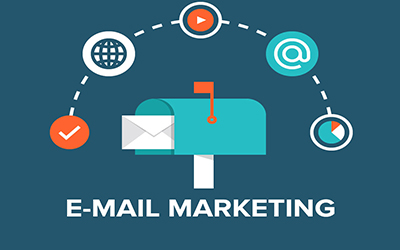Image Credit:
File ID 40642326 | © Pressureua | Dreamstime.com

In the competitive healthcare space, medical professionals can gain a clear advantage by leveraging patient data personalization to tailor their outreach. When handled thoughtfully—and in compliance with regulations—this approach enhances patient engagement and boosts conversion across touchpoints.
Patient data personalization begins with collecting the right information, such as demographics, visit history, treatment type, and communication preferences. Once organized—often within a CRM system—this data empowers providers to segment patients into meaningful groups and craft messaging that resonates.
Effective segmentation might include:
This level of segmentation supports targeted messaging that is both relevant and respectful.
Medical practices see strong ROI by combining personalization with email marketing strategies. According to HubSpot and industry research, personalized emails can generate up to 26% higher open rates and deliver exceptional return value.
Craft campaigns that serve specific patient groups—for example, sending post-operative care instructions to surgery patients or wellness reminders to those with chronic conditions. Use dynamic content blocks to tailor messaging based on patient history or upcoming appointments. This approach boosts click-throughs and fosters trust.
One of the most overlooked but effective opportunities for targeted messaging is reaching out to patients who still have unused insurance benefits before the end of the calendar year. Dental and medical insurance plans often operate on an annual use-it-or-lose-it basis, creating urgency for patients to schedule overdue checkups, elective procedures, or follow-ups.
Why It Works:
How to Segment This Group:
To target these patients effectively, practices typically rely on data from their practice management software (PMS) or electronic health records (EHR), cross-referenced with insurance tracking tools or billing data.
Here's how this can be set up:
Once you have your list, use email marketing or SMS reminders to notify these patients about their remaining benefits. Messaging should be empathetic and helpful, with language like:
“Your insurance benefits reset soon. Schedule your appointment before December 31 to maximize your coverage.”
This strategy can also be deployed as part of a year-end recall campaign, ideally integrated with your CRM system and automated workflows.
Patient trust is foundational. Every personalized marketing effort must align with HIPAA compliance and strong privacy standards. Ensure data is secured, encrypted, and accessible only to authorized team members.
Where consent is required, make opt-in and opt-out options clear. Use anonymized or aggregated data for broader trend analyses while safeguarding individual PHI. Ethical data use builds credibility and safeguards reputation.
Your medical marketing efforts are strongest when patient personalization is embedded across channels. For instance:
Medical Marketing Guru offers expertise in integrating personalization across marketing channels, from secure patient forms to email workflows.
Track key performance indicators such as open rates, appointment conversion, and retention. Compare these to industry benchmarks—for example, average email campaign ROI or landing page conversion standards published in healthcare marketing literature.
Adjust your campaigns based on results: refine subject lines, test new content blocks, or retarget groups who don’t engage.
By embracing patient data personalization—and combining it with medical marketing best practices—you deliver messaging that feels human, relevant, and trustworthy. This approach strengthens patient engagement, supports retention through automated reminders and informational content, and positions your practice for sustainable growth.
If you’d like help building compliant CRM workflows or launching segmented email campaigns, including consent-based workflows, Medical Marketing Guru can assist in designing HIPAA-aligned solutions that integrate with your broader marketing strategy.

 Copyright 2021-2025
Copyright 2021-2025